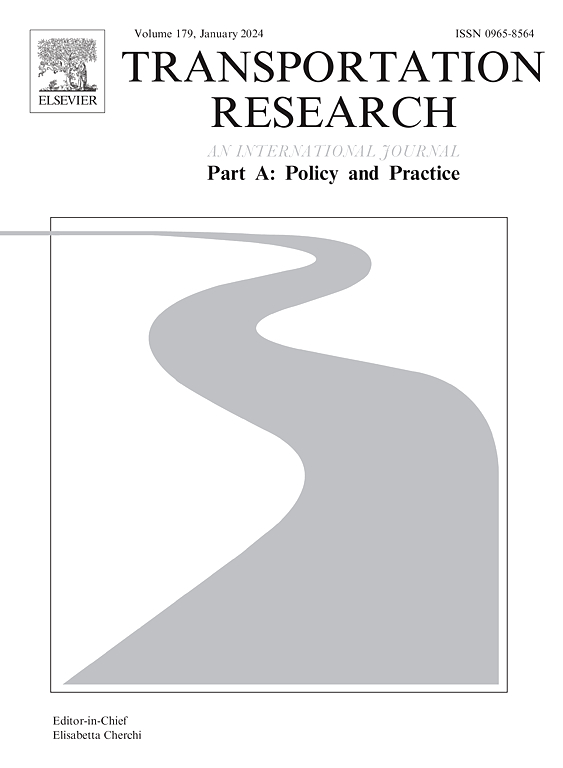优化货运路线:时间与距离的两难选择
IF 6.3
1区 工程技术
Q1 ECONOMICS
Transportation Research Part A-Policy and Practice
Pub Date : 2024-10-22
DOI:10.1016/j.tra.2024.104283
引用次数: 0
摘要
优化货运路线的传统方法以最小化基于距离的成本函数为基础。新方法也将时间作为最小化的目标函数。然而,时间和距离之间的权衡有时并不明确。本文提出了一种新的路线优化方法,即同时考虑时间和距离。为此,使用了车辆运营成本和时间价值来将时间和距离转换为货币单位。通过研究西班牙三个不同层次的网络(加泰罗尼亚地区、巴塞罗那市和潘普洛纳市中心),结果表明,同时考虑时间和距离的最小化方法比传统方法产生了更好的结果,特别是在拥堵效应更为相关的地方层面。这些发现有助于物流公司优化运营,也有助于公共机构利用这些模型做出决策和制定物流政策。本文章由计算机程序翻译,如有差异,请以英文原文为准。
Optimizing freight delivery routes: The time-distance dilemma
Traditional approaches to optimizing freight delivery routes are based on minimizing a distance-based cost function. New approaches also use time as an objective function to minimize. However, the trade-off between time and distance is sometimes unclear. This paper presents a new approach to route optimization in which both time and distance are considered conjointly. For this purpose, the vehicle operating cost and the value of time have been used to translate time and distance into monetary units. By studying three different networks in Spain with varying levels of detail (the region of Catalonia, the city of Barcelona, and the Pamplona city center), the results show that minimizing both time and distance yield better results than the traditional approach, especially at a local level, where congestion effects are more relevant. These findings are helpful for logistics companies to optimize their operations, as well as for public authorities who could employ these models to make decisions and create policies on logistics.
求助全文
通过发布文献求助,成功后即可免费获取论文全文。
去求助
来源期刊
CiteScore
13.20
自引率
7.80%
发文量
257
审稿时长
9.8 months
期刊介绍:
Transportation Research: Part A contains papers of general interest in all passenger and freight transportation modes: policy analysis, formulation and evaluation; planning; interaction with the political, socioeconomic and physical environment; design, management and evaluation of transportation systems. Topics are approached from any discipline or perspective: economics, engineering, sociology, psychology, etc. Case studies, survey and expository papers are included, as are articles which contribute to unification of the field, or to an understanding of the comparative aspects of different systems. Papers which assess the scope for technological innovation within a social or political framework are also published. The journal is international, and places equal emphasis on the problems of industrialized and non-industrialized regions.
Part A''s aims and scope are complementary to Transportation Research Part B: Methodological, Part C: Emerging Technologies and Part D: Transport and Environment. Part E: Logistics and Transportation Review. Part F: Traffic Psychology and Behaviour. The complete set forms the most cohesive and comprehensive reference of current research in transportation science.

 求助内容:
求助内容: 应助结果提醒方式:
应助结果提醒方式:


